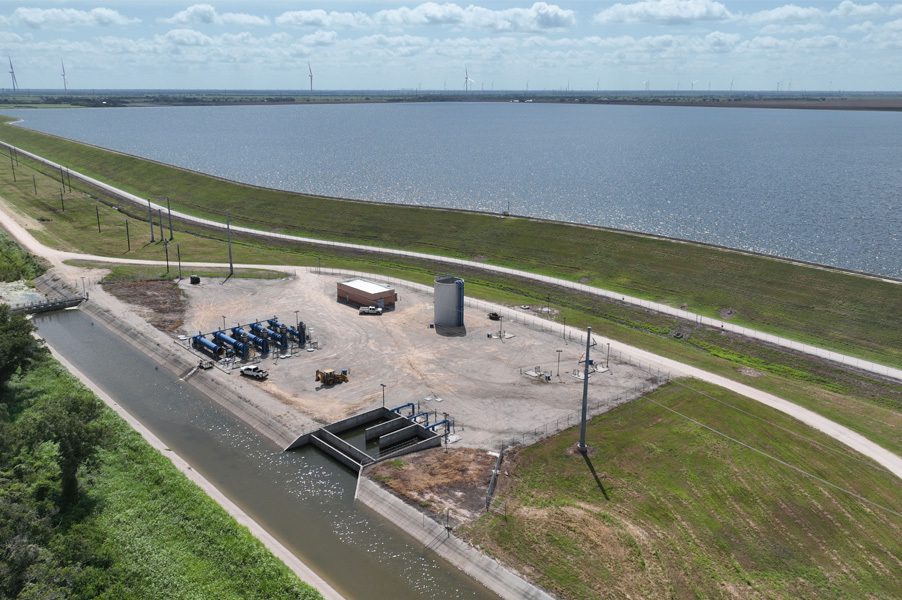Highland Lakes could catch a break thanks to new LCRA reservoir

The Lower Colorado River Authority’s Arbuckle Reservoir just came online in Wharton County, over 100 miles away from the Highland Lakes. Its completion could mean relief from some of the water demands on lakes Buchanan and Travis. Photo from LCRA
The Lower Colorado River Authority’s Arbuckle Reservoir just came online, marking the first large water storage project completed by the authority since the 1950s. While the new, $456 million reservoir is over 100 miles away from the Highland Lakes, in Wharton County, it could mean relief from some of the water demands on lakes Buchanan and Travis.
Water from this new reservoir will be used to serve customers, including agricultural operations, in the lower basin of the Colorado River and to satisfy required environmental flows into Matagorda Bay. Prior to Arbuckle’s completion, water had to be released from the Highland Lakes to satisfy those needs.
Some water will still be sent downstream from Buchanan and Travis for coastal purposes according to LCRA, but the burden on them should be greatly reduced.
“This is historic for the lower Colorado River basin and LCRA,” said John Hofmann, LCRA executive vice president of Water, in an Oct. 21 media release. “These large water supply projects can be very challenging, but we kept at it and are very pleased to say the new reservoir is up and running and ready to serve.”
The new reservoir spans nearly 1,100 acres and is about two miles wide by one mile long. While it holds about 40,000 acre-feet of water, it will add about 90,000 acre-feet of usable storage capacity when used in combination with management of lakes Buchanan and Travis. Those reservoirs hold about 1.99 million acre-feet combined when full and serve as the primary water supplies for communities throughout Burnet and Llano counties, and the greater-Austin metro-area.
“Arbuckle Reservoir benefits everyone in the basin,” Hofmann said. “In addition to reducing the amount of water from the Highland Lakes that will be sent downstream, it also enables us to store water in the lower basin for the first time. This allows us operational flexibility, so we can meet some or all the needs in the area with water stored locally and be more efficient in using downstream runoff.”
Arbuckle will likely fill up more regularly and can sustain more draw down due to higher levels of rainfall in the Wharton County area, which is about twice as much as the Highland Lakes watershed, according to LCRA. Its current storage level can now be tracked on the LCRA Hydromet river report.
The reservoir is completely manmade, and does not have natural inflows from creeks and tributaries like Buchanan and Travis do. Water will be pumped from the Colorado River into Arbuckle for storage, to capture it while flows are strong, and then pumped back out as needed.
LCRA will still release water from the Highland Lakes to supply water to customers below Lake Travis, including the cities of Austin and Pflugerville, the West Travis County Public Utility Agency, several power plants, industries and agricultural operations, as well as to meet environmental flow requirements for locations in the river above the intake for Arbuckle Reservoir.
The project had a $456 million price tag, partially paid for by grants and funding from the Texas Water Development Board.
Arbuckle is not open to recreation, like fishing, boating, or swimming, like lakes Buchanan and Travis. It will strictly function as a water storage facility.

